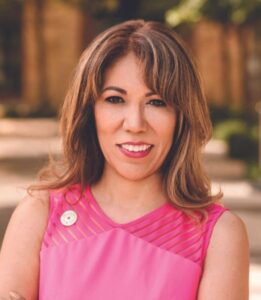 2 min read November 2021 — Texas A&M University-San Antonio (A&M-San Antonio), founded in 2009, is a contemporary university reflective of the diverse and heritage-rich community it serves. In an interview with Invest, President Cynthia Teniente-Matson discussed the main takeaways from the pandemic, dynamics surrounding first-generation students, the evolving nature of higher education and the institution’s role as a Hispanic Serving Institution (HSI).
2 min read November 2021 — Texas A&M University-San Antonio (A&M-San Antonio), founded in 2009, is a contemporary university reflective of the diverse and heritage-rich community it serves. In an interview with Invest, President Cynthia Teniente-Matson discussed the main takeaways from the pandemic, dynamics surrounding first-generation students, the evolving nature of higher education and the institution’s role as a Hispanic Serving Institution (HSI).
What are some of the main takeaways from the pandemic?
Some of the realities around public health are among the big takeaways from the pandemic. The pandemic has made obvious and in some cases, exacerbated inequities. So we have a renewed and better-informed purpose to help provide adequate health facilities, a diverse and well-prepared health workforce, and to confront and address the disparities we see, particularly in the Latino, African American, and other minority communities.
A primary focus is also how to be prepared for the careers of tomorrow, specifically regarding technology. Cyber has become much more prominent in every profession, whether that’s cyber-defense or cyber-proactiveness. While we’re not all going to become cyber professionals, we do need to know how to protect ourselves digitally.
How is A&M-San Antonio ensuring student success in an evolving educational environment?
We are in a moment of great change, and universities across the nation are in a period of transition and, ideally, responsiveness. One element that will not change is the university’s role in helping transform lives and communities. This is what universities are intended to do – we are at the forefront of contributing to how individuals become who they are meant to be. We do this by providing safe spaces for the process of discovery and sharing, ultimately helping our students to cross the stage with credentials that matter and prepare these individuals to be successful and career-ready.
What challenges do first-time generation graduates face?
Over 70% of our students are first-generation. When students graduate from college, typically the race is often who got the best job and best offer with the best company. What we’ve found recently is that students may not want to work immediately out of college. They want a moment to breathe, relax and recalibrate. This is true for many first-generation students who have multiple responsibilities. They’re helping in their household, whether by working or taking care of their elders. They might not be ready to jump into the next big job offer.
How was enrollment at the university impacted by the pandemic?
In terms of enrollment, A&M-San Antonio did not go backward during the pandemic. Rather, we continued to grow each semester. The pandemic allowed us an opportunity to leverage our geography and to use our outdoor spaces in creative ways. For example: we bolstered our external Wi-Fi and access so that students could expand the classroom experience outside and to safely continue their work. Another example occurred in fall 2021 – we were oversubscribed for our on-campus housing. This tells me that students want to be here and live on campus. To address this demand, we conducted a number of focus groups with students who were living in the residence halls during the pandemic to ensure that we were maintaining their safety and well-being.
What programs at the university are experiencing increasing demand?
We’re seeing more students in the health professions. Computer science has been one of A&M-San Antonio’s fastest-growing areas, with programs such as information technology, cyber-engineering and cybersecurity. We’ve also seen more people interested in behavioral health, such as counseling and wellness.
How have workforce and educational norms been impacted by the pandemic?
There are a couple of realities that we need to recognize. One is that our communities are suffering from the collective trauma of the pandemic. The trauma people have experienced throughout the pandemic is impacting what people want to do, as well as how they want to do it. The other critical reality is being confronted with the digital and health inequities that exist across the nation, particularly in minority communities. As a result of these realities, we’re reimagining the workforce, work experience and work conditions. We have become a curbside, concierge society and we have to think about this as well in education. This includes how we are able to provide a concierge-level experience in higher education, being quick, flexible and responsive enough to meet students when and where they need support.
What is your outlook for Texas A&M University-San Antonio?
My outlook for Texas A&M University-San Antonio is positive and bright. We’re looking at continuing to leverage our geography and take advantage of opportunities that have been presented to us in the form of recovery from the pandemic, the emergence of a new work culture and continued growth in our enrollment, our physical footprint, and most importantly, in our impact on our students and the community.
For more information, visit:
